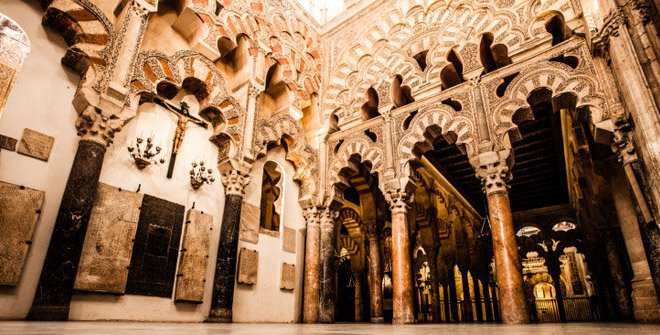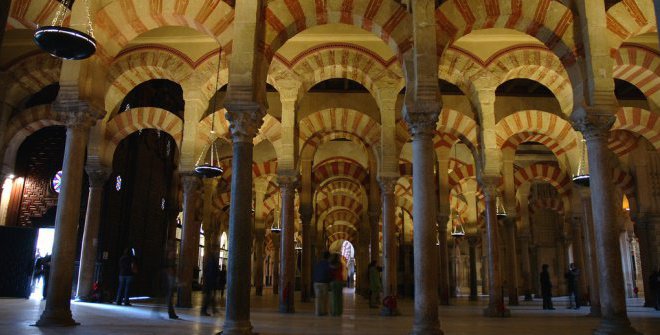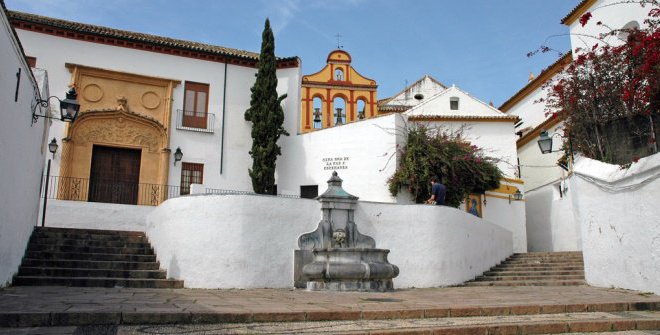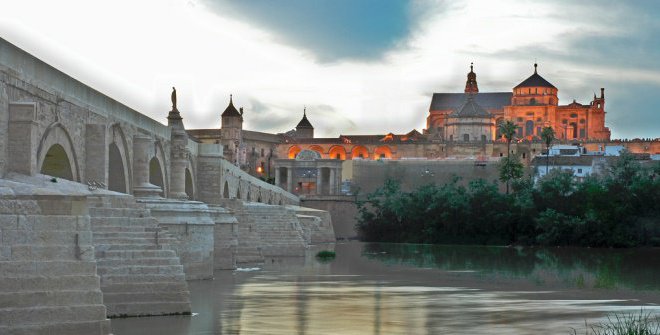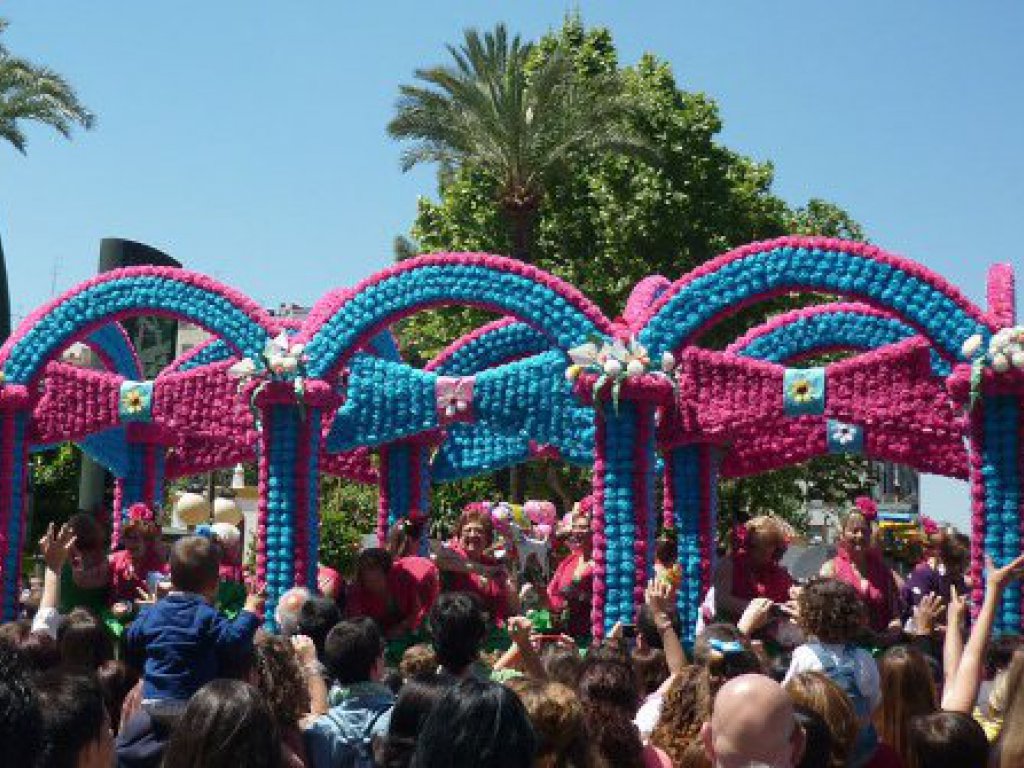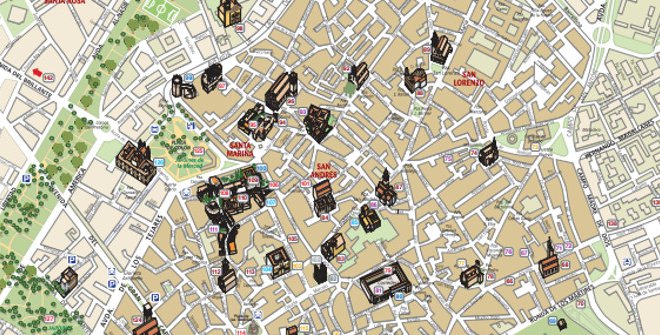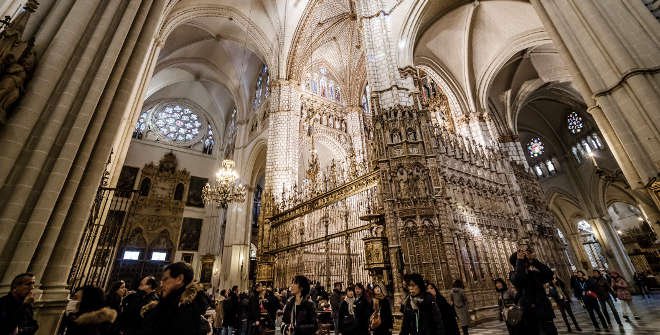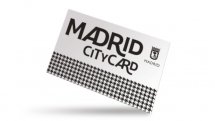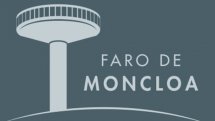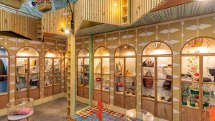Córdoba

Córdoba is the rightful heir to the architectural gems left by the different cultures that settled in the Iberian Peninsula. Below is a list of the highlights of the rich artistic legacy of this beautiful city.
The Great Mosque embodied the power of Islam in the West. Its construction commenced in 785 AD on the site of a church consecrated to St. Vincent. The original mosque had several extensions in the consecutive periods of Al-Andalus and more changes were introduced by the Christians following the Reconquista. The Mosque has an architectural forest populated by columns and arches. The Mihrab in this old place of worship is a richly ornamented prayer niche that held a gilt copy of the Koran. Other outstanding features are the coffered ceiling and the arches and pillars with decorated bases and shafts in a variety of colours that create a dazzling visual effect.
The Jewish temple’s construction began in 1315. On the upper level is the women’s gallery. The prayer room has three richly decorated balconies with small multi-lobed arches, and on the east end there opens a tabernacle for holding the Torah.
Built for Caliph Abd al-Rahman III, this glorious palace just a few kilometres north of Córdoba was to become the seat of the Caliphate government and symbol of its power. However, its glory was short-lived and today only the ruins remain. The Medina Azahara featured a rich hall, a huge portico, the house of Yafar and the mosque.
Alcázar of the Catholic Monarchs
King Alfonso XI had the alcázar (palace-fortress) built in 1328. During the reign of the Catholic Monarchs it was royal residence for eight years. The Mudejar style is apparent in the tranquil courtyards and gardens of this construction defended by four turrets named Paloma (dove), Homenaje (tribute), Leones (lions) and Inquisición (Inquisition) that make a square-shaped structure. The main hall or Mosaic Hall, with magnificent tiles and an ancient third-century sarcophagus, is really remarkable.
Roman Bridge
Built across the river Guadalquivir, it links Campo de la Verdad and Barrio de la Catedral and connected Córdoba with the rest of the Peninsula. It’s also known as Puente Viejo (Old Bridge). It’s 331-m-long and is supported by 16 arches.
Throughout the year, it is possible to visit the beautiful courtyards of Cordoba, but the ideal time is in the first fortnight of May, when the courtyards are in full blossom and can be seen as part of the Festival of Cordoba’s Courtyards (World Heritage).

In 1903, the remains of some Arabian baths were found at the Holy Martyrs Field, which were buried a few months later. Between 1961 and 1964, historians from Cordoba unearthed this construction, showing its major significance. These baths or hammam, constructed under the Alhakem II caliph, form an ensemble of rooms with masonry walls and can be seen with a prior booking.
Cordoba boasts many gates and walls with a lot of history that must be visited, such as the Arco de Caballerizas (Stables Arch), located at the end of the street of the same name and attached to the Royal Stables building; the Wall at Calle Cairuán located above the previous Roman wall, whose current appearance is the result of reconstructions in the past century; or the Almodóvar Gate very close to the Alcazar of the Christian Kings, mainly a 14th century Christian construction.
Images courtesy of Cordoba’s Department of Tourism
OTHER TRAIN EXCURSIONS
A period train running between the capital and Aranjuez recreates the Madrid area’s first rail line. 2025 season: from 22 March to 9 November. Tickets on sale
With entertainment and treats along the way, this is a really unique and wonderful way of visiting a town steeped in history. 2025 season to be confirmed
Travel from Madrid to San Lorenzo de El Escorial on a vintage train and unveil the secrets of King Philip II’s empire. From 20 September to 13 December 2025
Get on board this vintage train whose steam locomotive pushes its way past stunning landscapes in southeast Madrid. Next season: Spring 2026
